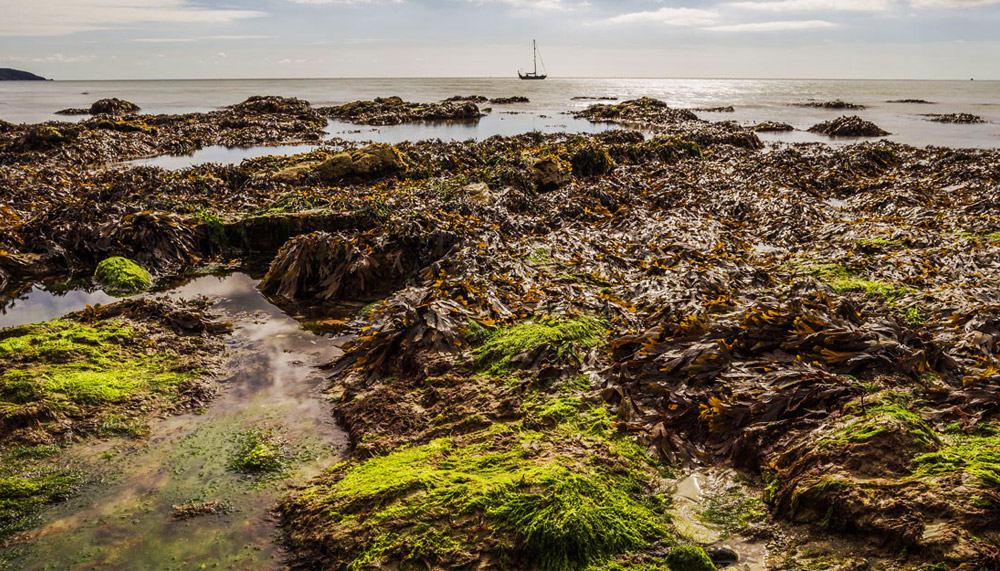
Hooked on Tides: Exploring the Unseen Force that Shapes Our Fishing Success
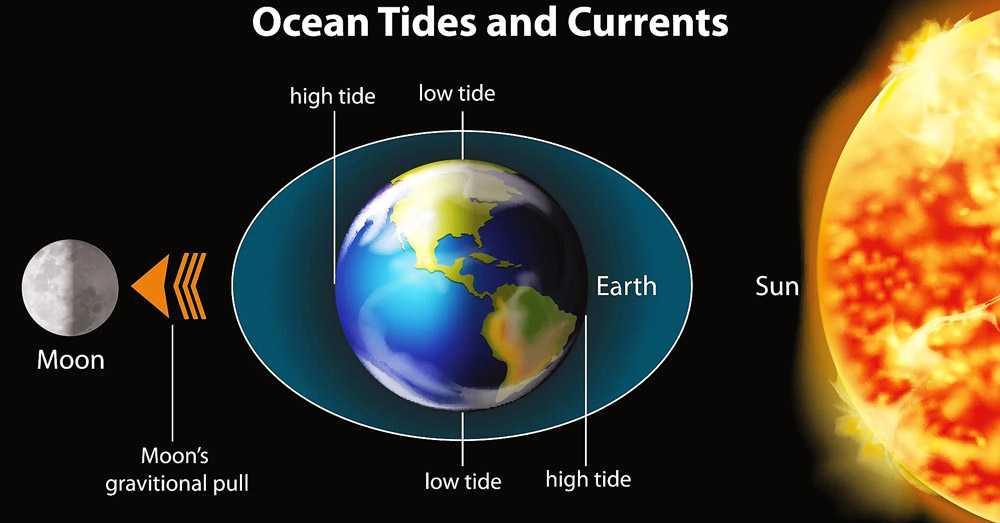
As the sun peeks over the horizon, I often find myself standing at the water’s edge, rod in hand, heart pounding with anticipation. For as long as I can remember, fishing has been more than a hobby – it’s a lifelong passion. Each fishing trip, each moment by the water, I feel a magnetic connection with nature, an enchanting ballet of life beneath the surface, waiting to be discovered.
🌊 First Cast: My Journey into the World of Tides and Fishing 🎣
I still recall one particular summer’s morning; the sea was a silken mirror reflecting the soft blush of dawn. On that day, I noticed something remarkable. As the hours slipped by, the sea seemed to breathe with life, ebbing and flowing with a rhythm that was palpable. The fish were more active, more eager to bite, and my fishing success seemed to align with these aquatic breaths. It was an epiphany. My eyes were opened to a force I’d been overlooking, an invisible player that shaped each fishing expedition – the tide.
The more I investigated, the more I understood. Tides were not just the rise and fall of the sea. They were a complex, beautiful phenomenon influencing not just the ocean’s movement, but its very inhabitants – the fish we so eagerly seek. This realization transformed my approach to fishing, unlocking new levels of understanding and success. It felt like deciphering a secret code, one that the sea had been whispering all along.
🔶In this article, I aim to take you along on my journey of discovery. To unveil how tides ebb and flow, how they move the heart of the ocean and the fish within it. We will delve into the fascinating interplay between these lunar-led waves and our beloved pastime. Whether you’re a seasoned angler or a newbie to the fishing scene, understanding the tide’s impact can turn a day of fishing from luck to an art form. So, tighten your fishing line, put on your waders, and prepare to dive deep into the captivating dance of tides and fishing. 🚀
🌙 Ebb and Flow: Decoding the Mystery of Tides 🌊

We’ve all noticed the steady rise and fall of ocean waters, a rhythmic dance that paints the world’s coasts in an ever-changing canvas. But what really causes this fascinating phenomenon? The answer is as out of this world as it gets – our faithful celestial companions, the moon and the sun.
Tides are essentially the result of gravitational forces exerted by the moon and the sun, and the earth’s own rotational movement. The moon, being much closer to us, has a greater influence. Its gravitational pull causes the ocean water on the side facing it to bulge out, leading to a high tide. Meanwhile, on the opposite side of the earth, inertia caused by the earth’s rotation creates another bulge, resulting in a second high tide. The areas in between these bulges experience low tides.
💡 The Moon’s Choreography: Spring Tides and Neap Tides
Tides aren’t always the same, and the changes in their intensity are primarily due to the positions of the moon and the sun relative to the earth.
🌕 Spring Tides: No, they’ve got nothing to do with the season spring! The term ‘spring’ comes from the notion ‘to spring forth.’ Spring tides occur when the sun, moon, and earth are aligned (during full moon and new moon). The combined gravitational forces of the sun and moon create tides with the largest difference between high and low water, leading to what we call “spring tides.”
🌗 Neap Tides: About a week after a spring tide, the sun and moon form a right angle relative to the earth (at the first and last quarter moon). Their gravitational forces partially cancel each other out, resulting in tides with the smallest difference between high and low water. These are known as “neap tides.”
🖼️Line graph here showing the difference in water level between spring tides and neap tides, with high points representing high tide and low points representing low tide.

Tides are more than just a breathtaking spectacle; they’re the beating heart of our oceans. Their influence reaches far and wide, impacting marine life behavior, coastal ecosystems, and our very topic of discussion – fishing. So let’s move forward, riding the tide, to understand how these marine pulses enhance our angling adventures.
🐠 Fish Tales: Unraveling the Impact of Tides on Aquatic Life 🌊
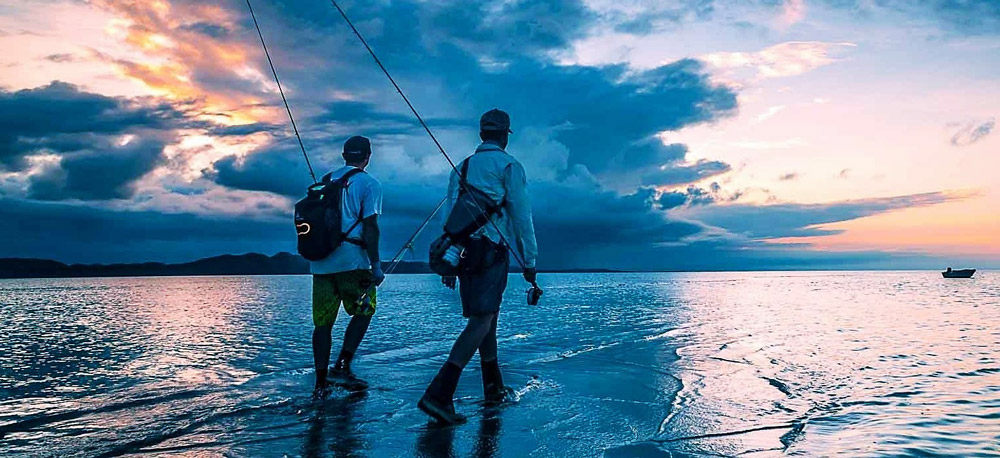
Just as the moon’s gravitational pull orchestrates the ballet of the tides, it similarly guides the rhythm of life beneath the water’s surface. Understanding this symphony can give us a profound edge when it comes to fishing. Let’s dive deeper to see how different fish species dance to the tune of the tides.
🎵 Rhythms of the Deep: Tidal Influences on Fish 🐟
Fish, much like us, have daily routines. Tidal cycles often dictate their behaviors such as feeding, breeding, and migration. For instance, many predatory fish like bass or snook align their feeding times with the changing tides. The movement of the water stirs up sediment, which attracts smaller creatures like crabs and shrimp. These, in turn, draw in the bigger fish that we anglers are keen to catch. It’s a lively feast directed by the ebb and flow of the sea.
🌊 Tides and Feeding Patterns: A Delicate Balance 🍴
Tides play a significant role in nutrient distribution, which directly impacts where and when fish decide to feed. During a falling tide, as the water moves away from the shore, it pulls nutrients from the coastline into the deeper waters. This outflow of nutrients invites fish to follow the tide out to sea to feed. Conversely, during incoming tides, food-rich water is pushed in towards the shore, bringing fish closer to the beach, estuaries, or jetties.
🎦Video YouTube: How the Moon and Tides affect bite times for fish like snapper, trevally and kingfish.
🎣 Reeling in the Memories: Personal Observations 📝
Over my many years of angling, I’ve noticed a fascinating pattern. On a spring tide (when the difference between high and low tide is at its greatest), I’ve experienced some of my most successful fishing excursions. The increased water movement seems to make the fish more active, more eager to feed, creating prime fishing opportunities. Conversely, during neap tides, when the tidal range is minimal, my catch rates have generally been lower. The fish seem less enthusiastic, the sea quieter, and the bite slower.
Recognizing these patterns doesn’t just improve our fishing game. It enriches the experience, giving us a deeper appreciation for the intricate web of life that pulses with the beat of the tides. Every fishing trip becomes not just a chance for a great catch, but an opportunity to witness the grand spectacle of nature’s harmony. 🌅
🕒 Fishing by the Clock: Timing Your Catch with the Tides ⏱️
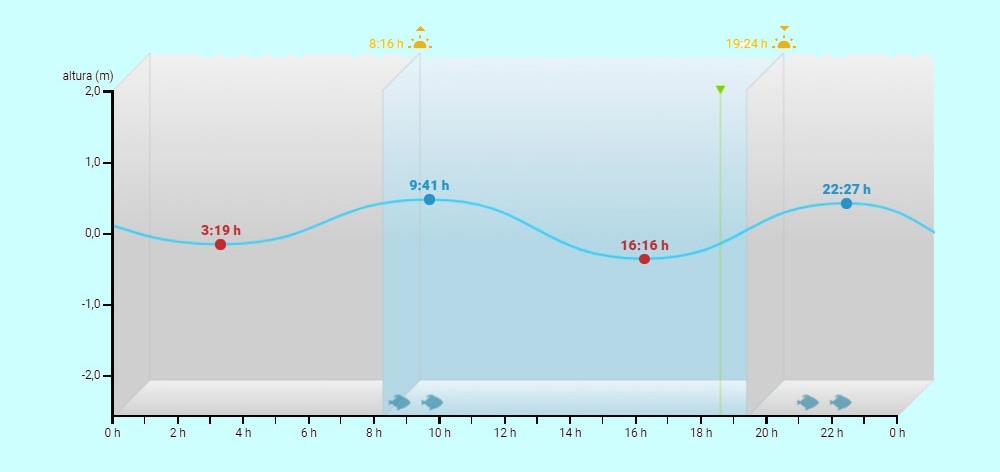
“Give a man a fish, and you feed him for a day. Teach a man to fish in sync with the tides, and you’ll feed his fishing passion for a lifetime.” This playful twist on an old proverb holds a powerful truth – understanding tides can dramatically enhance our fishing trips. But how does one turn tidal knowledge into practical fishing strategy? Let’s dive into this!
🌙 The Tide-Fishing Connection: Best Times to Fish 🎣
Timing your fishing trips with the tides can turn a languishing fishing trip into a day of trophy catches. Fish tend to feed more actively during the transition periods between tides, particularly in the couple of hours surrounding the peak of both high and low tides.
A falling tide, when the water is heading out to sea, is an excellent time to fish. As the tide pulls water away from the shore, it takes with it bait and other food, creating a feeding frenzy that attracts fish.
Conversely, the incoming tide, as the sea moves back towards the shore, brings with it a fresh supply of food and oxygenated water, again creating an ideal scenario for fish to feed. As a result, you’ll find this to be a great time to cast your line and land a successful catch.
🌊 Mastering the Tides: Fishing Strategies for Different Tidal Stages 📝
Here are some useful strategies to fish different tidal stages:
- High Tide: Fish are likely to move in closer to shore, exploring new areas flooded by the high tide for food. Focus on these newly accessible areas, particularly around structures such as rocks, piers, or jetties.
- Low Tide: Fish might move out to deeper waters as the shallows become too shallow for comfort. Look for channels or deep holes that fish might use as highways during low tide.
- Ebb Tide (Falling Tide): As the tide begins to fall, focus on outlets such as river mouths or channels, where baitfish and other food sources are being pulled out into deeper waters.
- Flood Tide (Rising Tide): As the tide begins to rise, fish will often move in to feed on the food being pushed in by the incoming waters. Focus on inlets and areas where the incoming tide is pushing food.
🏆 Casting Lines and Reaping Rewards: Success Stories 🥇
There are countless tales of fishing successes where understanding and utilizing the tides have turned the tables.
For example, one memorable fishing trip took place during a spring tide. After studying the tide charts, I positioned myself near a channel that ran out of a large estuary. As the ebb tide picked up, the fishing was electric. The outgoing tide was pulling bait out of the estuary right past my position, and I had one of the most productive fishing sessions I can recall.
There’s a beautiful symmetry in aligning our fishing activities with the natural rhythms of the sea. It’s like learning to dance with the ocean. And when we tune into this rhythm, we unlock a rich and rewarding fishing experience that can’t be replicated by sheer luck alone. 🌟
Is Fishing Better at High Tide or Low Tide?
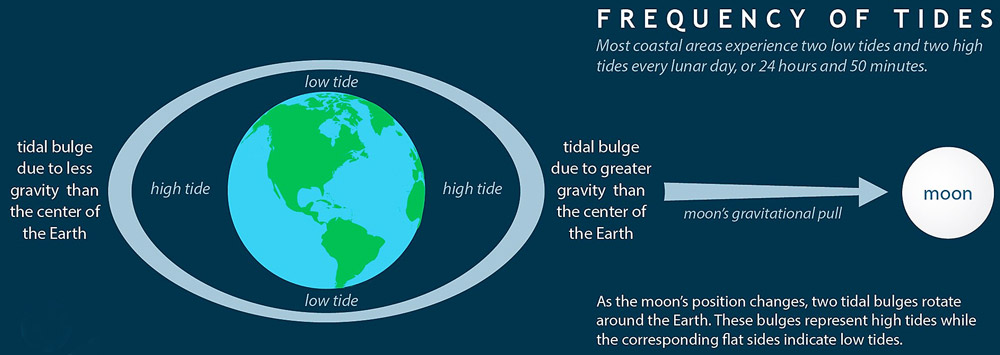
The age-old question: “When is the best time to fish?” every angler asks himself sooner or later. While we all know that the weather affects fish. Anyone who has held a fishing rod more than once in their life knows that there is more to come. How do you know when to go fishing?
Read on and find out! Experienced fishermen know that fishing is largely dependent on the current. If you want to be successful, you need to know more about tides.
Both low and high tides are not what you want. During high and low tide, you won’t get what you want from fishing. It is best to try to fish in the middle periods. This is between floods or fall tides.
Important: my recommendations! Tides affect fish behavior. But there are no clear rules and patterns for all cases. For example, sometimes sea bass fish bites well on silicon bait in the lowest water (depth of 30 centimeters near the shore). But most often this fish hunts at night on the waning water after the maximum tide level. Each area has its own conditions. I suggest looking at the schedules on the official fishing websites every time. These charts are good enough to help anglers.
Best Fishing Times and Tides
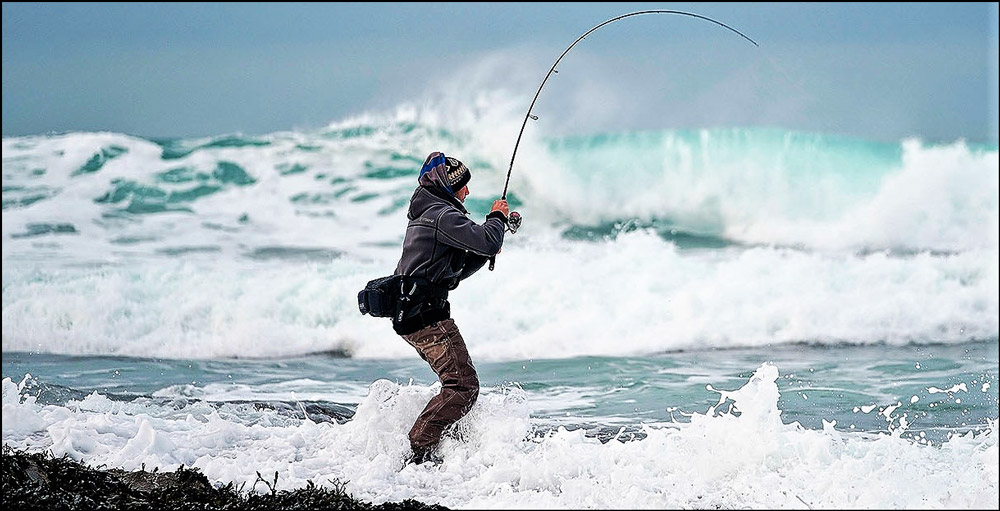
Low or high tides refer to periodic vertical fluctuations in ocean level that occur once or twice a day. Low or high tide is the result of changes in the position of the Sun and Moon relative to the Earth and the effect of their gravitational forces on the ocean. Simply put, Moon, while rotating around the Earth, attracts water to herself, and thus tides pass.
The activity of the fish directly depends on the phases of the moon. Fish, of course, is not interested in astronomy, but it clearly follows its instincts. For example, at a full moon, plankton will rise to the upper layers of the water to feed on microorganisms. Accordingly, the fish rises behind it, feeds more actively, and therefore bites better.
Every 14 days, low or high tides happen twice a day. Everything in the underwater world starts to move faster. Ocean waters are saturated with oxygen to the maximum. This is the best time for fishing.
You can only get to the reef by yacht. A couple of crew members and 4-6 anglers will feel comfortable on the 40ft boat. At high tide, the ship runs from the ocean, and if the wave allows, you can approach the reef at 40-50 m.
What happens on the reef itself? The tidal wave, hitting him, freezes for a moment, then splits. The upper part of the wave moves further, and the lower one, twisting, goes down. Thus, a tunnel with calmer water is formed along the reef wall. It is there that all fish, both fodder and predatory, keep.
At low tide, everything happens exactly the opposite. Between high and low water, that is, between high and low tides, the ocean takes about an hour for the so-called respite. Everything freezes, fishing will be unsuccessful.
Temperature
Temperature can either heat or cool things in the water. This is due to the sun. When the temperature is high, the stones in the water heat up perfectly and thus the shallow water heats up quickly enough when the tide retreats. This suggests that deep waters are warming up and the fish will bite more willingly.
It works in the opposite direction when the temperature is low. The stones do not heat up and thus are not able to heat the water during the tide retreat. At this time, the fish will be in warmer water, at a depth. The fish will not peck willingly as it will try to keep warm.
As you understand, fish live in shallow water only at a temperature that is comfortable for them. By the way, brightness also plays a key role in fishing. This is why the ideal time for fishing is a warm day in the shade.
You should be aware that air temperature does not necessarily reflect water temperature. For example, on a warm day after a snowfall, snow will melt and this will lead to a drop in temperature due to a large amount of cold meltwater and your chances of catching are minimized. On the other hand, a frosty day after a few warm days can unexpectedly give good results.
Currents
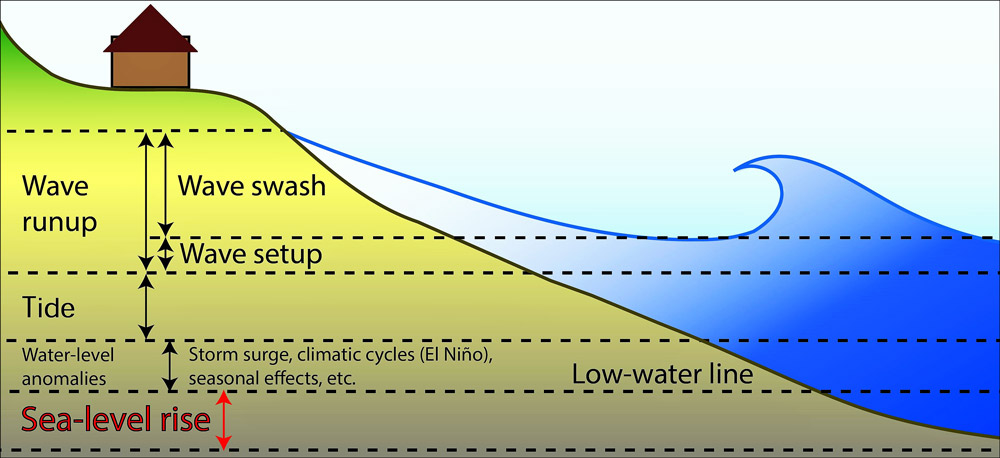
For fish living in river systems, the current can be their life force. It cools and oxygenates the water, it constantly brings them food, and the current forms their shelter, eroding the banks, causing sandbanks, and causing wood debris to fall into the river.
Since river fish are so dependent on the current, this is something anglers should consider if they plan to have any success in current fishing.
I recommend you fish with the current. Since fish do not want to spend their energy fighting the current, they usually do not fight it. It is best to fish near the edge of a weak current, as the fish is usually there, waiting for a quick meal.
Fishing Upstream
Since the current is what brings food to all species of fish in the river system, they always keep their nose upstream. Therefore, it is very important to fish in the current, casting upstream and so that the bait in the place with the current floats down the river. This creates a more natural situation and allows the fish to be less careful to grab your bait. If you fish upstream, your lure will simply slide behind the fish’s head from behind, resulting in much fewer bites.
Predatory fish such as perch and grayling can count on the current to bring food right into their mouth, but this does not mean that they want to constantly fight it. To save energy, they are most often hung in places called underwater pockets in the current. Current pockets are created from any object that is present in the river and blocks the flow of water. The edges of the sluggish vortex are very productive fishing spots for many species. Hanging in current pockets allows the predator to conserve energy and stay away from the current, but still be able to jump out in the current if probable prey is swimming by.
Downstream Fishing
Too many anglers focus on the slow current behind objects, assuming they will get the most bites. Unfortunately, this is not so. Sure, there may be some fish cruising around areas of weak current, but they are probably inactive, resting, and difficult to fool. Active feeding fish in river systems will always be on the edge or right in the stream because that is where the food is. Do not overlook areas just because they have a hard time in strong currents.
On the lake, if you do a few empty casts in the area, you will have some confidence that the fish are not there and are moving on. On a river system, this would be a huge mistake. Since the fish will dangle behind rocks or in cracks to stay out of the current, their bite areas are much smaller. For this reason, you may have to punch the bait through the area multiple times to get hit by the bait. A good rule of thumb is to fish in a strong current for twice as long as in a lake, especially if there are rocks.
Moon Phases
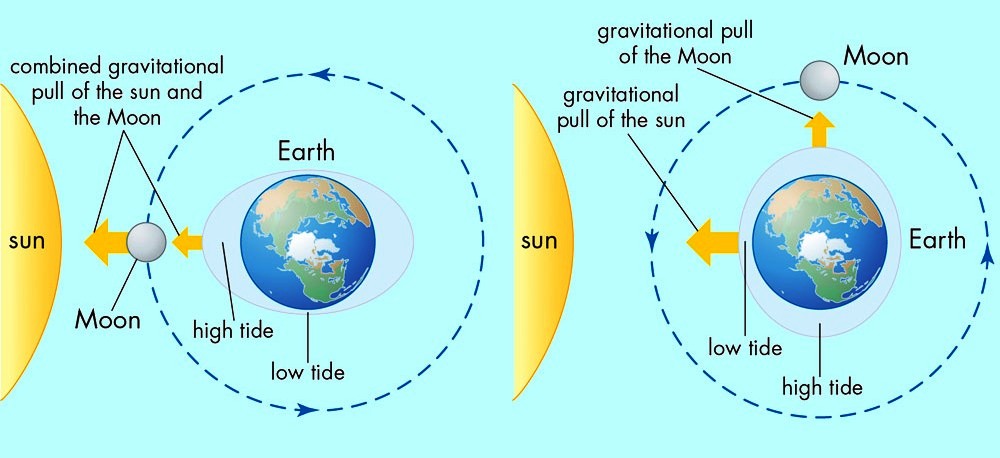
Many may think about what the moon has to do with it and why this information. Despite the fact that the influence of the phases of the moon on the biting of fish is not perceived by everyone as an important factor, such as, for example, pressure or wind, it should not be underestimated. The generally accepted fact is that all living organisms, including humans, are influenced by environmental conditions.
The best time to go fishing depends on the specific phases of the moon. Now there are several different versions of the influence of the phases of the moon on the biting of fish. Let’s consider the main ones:
- According to the first version, it is believed that 90% of catches in a lifetime will occur during the full moon and new moon phases. The idea behind fishing by moon phases is that the higher the tide, the more active the fish is. The strongest tides occur twice a month: during the new moon and full moon. This version is most relevant for places, the ebb and flow are most pronounced, for example, on the coasts of the ocean.
- The second version says that it is on the days of the new moon and full moon that the lowest fish activity is observed and, accordingly, its bite. An excellent time for fishing is considered to be the days of the young moon, which begin 3 days after the new moon and a few days a week before the new moon.
- There is also a statement that fishing should be done only on the full moon at night. The theory here is that the light of the moon allows the fish to see better. After all, at the same time, how nice it is, on a clear, warm, and moonlit night, to stand with a spinning rod on the shore and fish without the help of an annoying lantern! You can try to catch the predator with surface lures, leading them along the moon path. The splash effect of the attacking fish is guaranteed to be delightful!
🔶In my opinion and experience, it is best to fish on a full moon or new moon. During these events, lower low tides and higher high tides occur. And thus there are faster currents between the tides.
Effect of Еides on Аishing
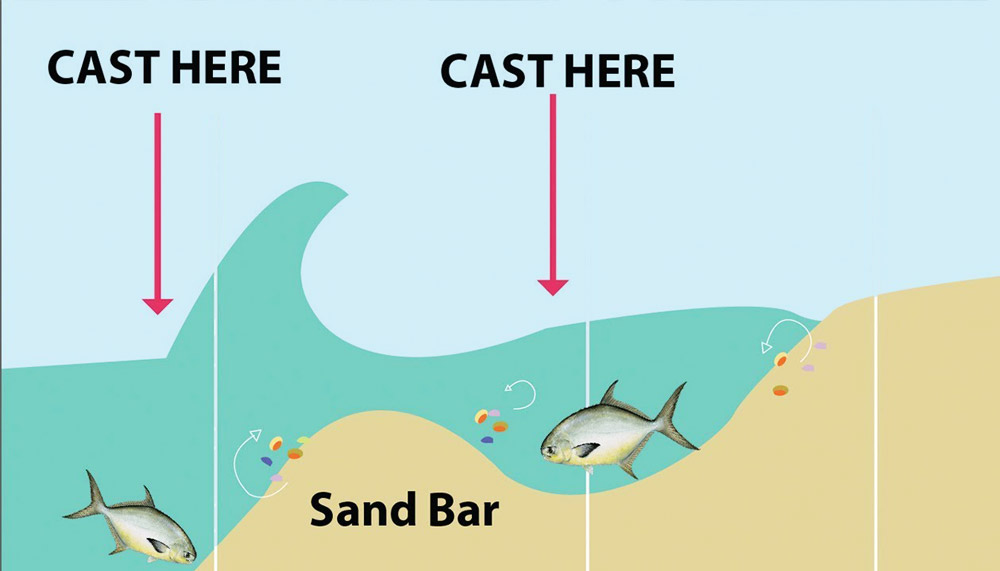
This is an important question every fisherman should know the answer to. Let’s take a closer look at this point. low or high tides refer to periodic vertical fluctuations in ocean level that occur once or twice a day. low or high tides are the result of changes in the position of the Sun and Moon relative to the Earth and the effect of their gravitational forces on the ocean.
High Tide
High tide is the rise of water resulting from periodic fluctuations in the level of the World Ocean, caused by the forces of attraction of the Moon and the Sun together with the effects of the Earth’s rotation.
Important! I do not recommend fishing at the highest point at high tide. At this moment, there is no water movement. The water will be stagnant and the fish will be inactive. At this time, the fish does not need food.
Fishing Rising Tide
The best time to fish is The rising or flooding tide. This is because the water is moving at this time. When the water starts to move, the fish starts to want to eat. Because the water moves differently, different baits will also give different results. The baits will be much closer to the shore with the rising tide.
Low Tide
Low Tide is also considered a bad time to fish. This is because the water does not move and the fish is inactive. However, if you do decide to fish at low tide, then I advise you to do it in deeper places. As a rule, there will be food for the fish and it will begin to rush to those places. If you manage to find a great spot, then your fishing will be effective in a short period.
Fishing Falling Tide
When the water level begins to fall, a falling tide occurs. Retreating, the water along with it begins to pull various insects, plants and so on that are attractive to fish. It is at this moment that you can cast your line and catch fish. This is the best time to fish because your bait will be carried into deep waters and attract fish.
🛡️ Riding the Waves Safely: Tidal Safety Tips for Anglers 🌊
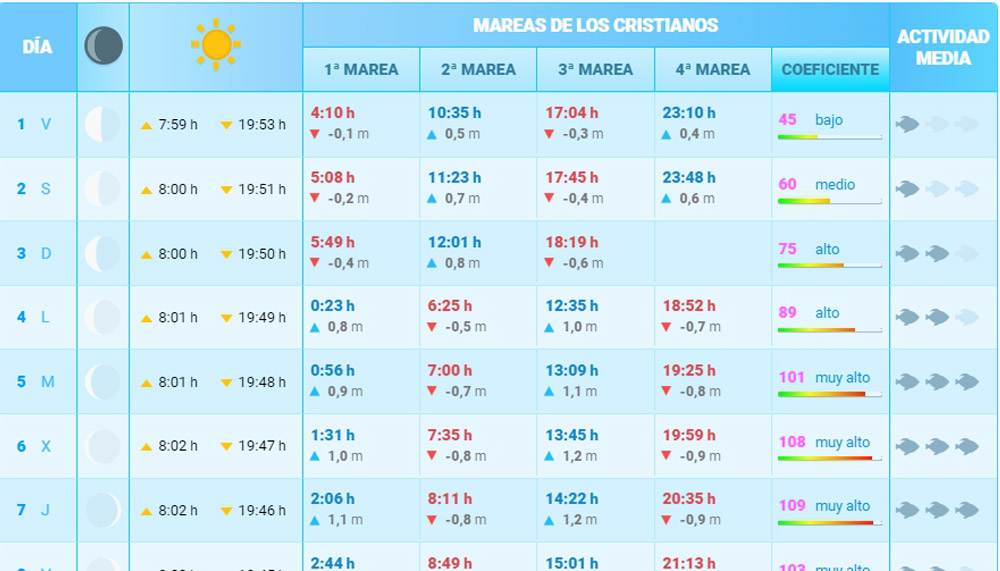
While the changing tides offer exciting opportunities for fishing, they also carry inherent risks. From sudden shifts in water depth to strong tidal currents, being mindful of safety is paramount when we align our fishing endeavors with the tides. I suggest you take a closer look at the tides in the oceans and rivers.
Oceans
There are severe tides in the oceans. They can be measured in miles. While in rivers they have a difference in feet. This suggests that if you do not know about the tides in the ocean in advance, it can lead to unsuccessful fishing. You must be prepared.
You need to know what time the tides will be in the place where you are going. It is from the tides that the ingress of food depends on which the fish will be collected. However, many fishermen prefer to fish in the sea. There is a lot of fish in the sea and there is excellent deep-sea fishing.
Rivers
Not everyone can share their experiences of fishing during high tides. However, I have a couple of stories. One of my best fishing trips was during a falling tide on the river. I was able to catch not only perch but also a lot of trout. This happened because my baits drifted to the middle of the depth of the river, and then I actively reeled them back. If you are a beginner fisherman, then I think the river is the best place to start.
⚠️ The Invisible Hazards: Understanding Tidal Dangers 🌪️
One of the primary risks when fishing in tidal waters is being cut off by an incoming tide. This happens when the rising tide floods the area you’re fishing in, potentially leaving you stranded. It’s particularly risky if you’re fishing from a sandbar, a tidal flat, or a beach with cliffs that prevent easy escape.
Another significant risk is the strong current associated with changing tides, particularly during spring tides when the difference between high and low tide is the greatest. These currents can quickly lead to dangerous situations, especially for those wading or fishing from a small boat.
🎣 Casting the Safety Net: Precautions for Different Tidal Conditions 📋
Adopting a safety-first approach is essential, no matter the state of the tide. Here are a few tips to keep in mind:
- Stay Informed: Always check the local tide times before heading out. Many apps and websites provide accurate, up-to-date tide information. Being aware of when high and low tide will occur can help you plan your fishing trip safely and effectively.
- Never Turn Your Back: Never underestimate the speed of an incoming tide. It can often creep up faster than you realize. Keep an eye on the tide’s progress to avoid getting caught off guard.
- Mind Your Footing: During low tide, the sea recedes, potentially revealing treacherous terrain like slippery rocks or soft mud. Be cautious of your footing and move carefully.
- Floatation Devices: If you’re fishing from a boat, ensure everyone onboard has access to a lifejacket, especially if fishing in areas with strong tidal currents. It could prove a lifesaver in the event of an accident.
- Communicate Your Plan: Let someone know where you’re going and what time you plan to return, especially if you’re fishing alone. If something goes wrong, they’ll know where to look.
🔶Tidal fishing can be a thrilling experience, enriching our connection with the ocean and its aquatic inhabitants. But always remember, while we ride the tides for fun, respect for the sea and awareness of its power is vital. Stay safe, and let the good times roll in with the tides! 🌅
🌙 Riding the Lunar Wave: Mastering the Art of Reading Tides 🌊
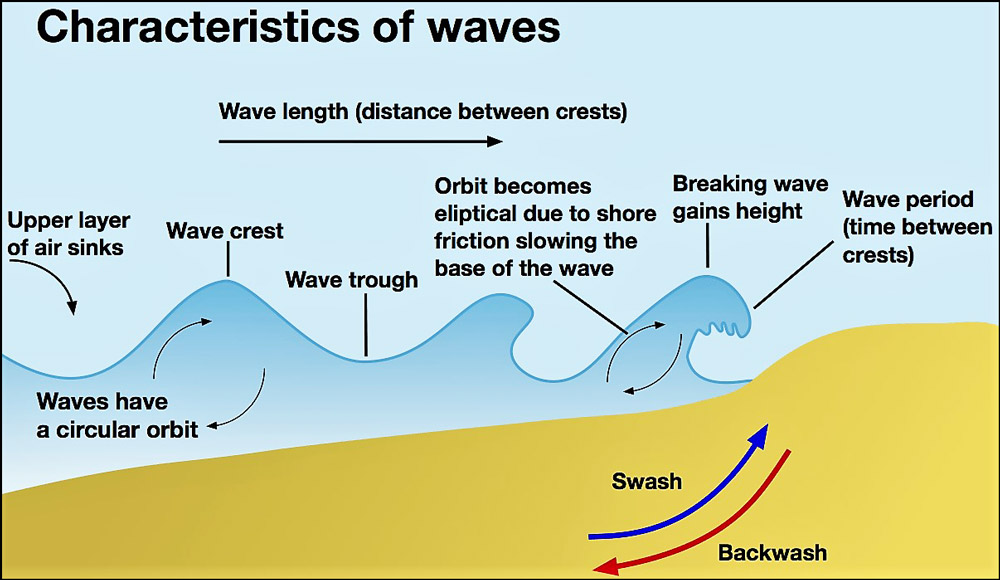
To fish in harmony with the tides, we need to understand their rhythm. Predicting and interpreting tide changes is an essential skill, an art form that can transform an average angler into a fishing maestro. Let’s delve into some practical tips and tools to help you become a tide-reading virtuoso.
🔮 Tidal Predictions: Tips and Tools for Understanding Tide Changes 🧭
Tide Tables: These are your primary tool for predicting the tides. You can find them online or at local bait and tackle shops. They will tell you the times for high and low tides for a specific location on any given day.
Tide Apps: There are numerous apps available that provide real-time tidal data, including tide times and tidal coefficients. Apps like “Tides Near Me,” “My Tide Times,” or “Fishing & Hunting Solunar Time” can be handy digital companions.
Understanding Tidal Coefficients: The tidal coefficient gives you an idea of the tide’s amplitude that day. Higher coefficients (over 80) suggest strong tides (spring tides), while lower ones (below 45) indicate weaker tides (neap tides).
📑 Fishing Reports and Tidal Knowledge: A Winning Combination 🎣
Combining your understanding of tides with local fishing reports can significantly boost your fishing success. Fishing reports provide data on where and when fish are biting. Combine this with your knowledge of the tides, and you can strategically plan when and where to cast your line to increase your chances of a fruitful catch.
🌟 The Joy of the Catch: Reflecting on the Fishing Experience 🎉
There’s a deep sense of satisfaction that comes from using your understanding of the tides to enhance your fishing trips. It’s about more than just increasing your catch rate. It’s about deepening your connection with nature, becoming an active participant in the aquatic symphony directed by the moon’s pull.
There’s a magical moment, as the sun begins to set, casting a golden glow across the water. You cast your line, timed perfectly with the incoming tide. As the waves rhythmically lap against the shore, there’s an anticipatory tug on your line. The thrill of the catch, brought about by the perfect blend of knowledge, timing, and a little bit of luck, is a moment of pure joy. This is the art of fishing with the tides, a dance with nature that leaves you with a brimming heart and unforgettable memories. 🌅
❓🎣 Frequently Asked Questions: How Tides Affect Fishing 🌊
🔶These are just a few of the common questions we receive about how tides affect fishing. If you have more questions or would like to share your own experiences, feel free to leave a comment below. Tight lines, everyone! 🎣🌊
🌟 Reeling It In: The Beautiful Dance between Tides and Fishing 🎣
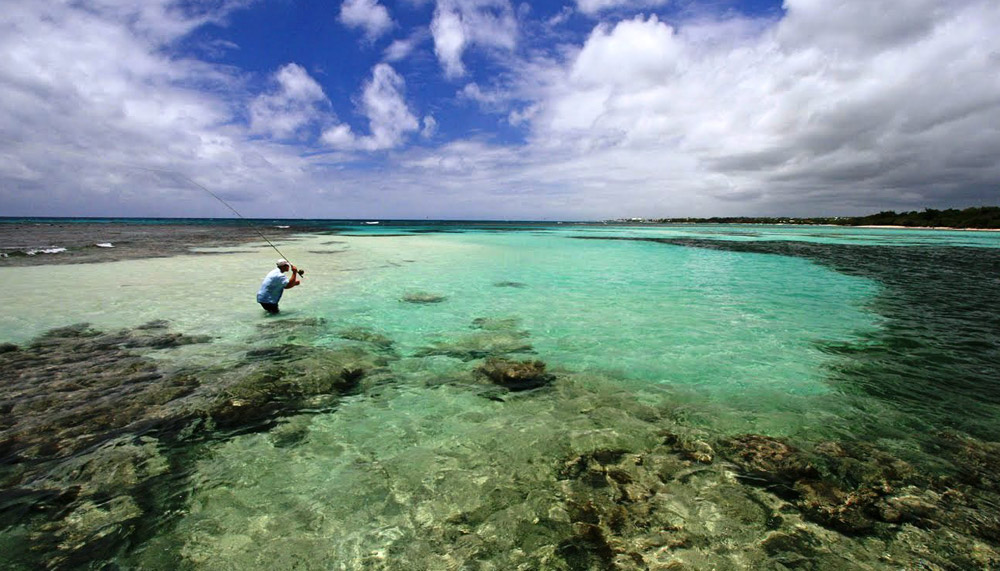
What tides are best for fishing? I think almost every fisherman asked himself this question. Fishing largely depends on the movement of the water. In this article, I have tried to answer this frequently asked question. I hope you found the answer and now you know how to fish the tides.
We’ve embarked on a fascinating journey, exploring the unseen but powerful force that the tides exert on our fishing adventures. We’ve dived into understanding what tides are and how they occur, shaped by the delicate interplay between Earth, Moon, and Sun. 🌍🌙☀️
We’ve discovered how these aquatic rhythms profoundly influence fish behavior, impacting their feeding patterns and, ultimately, our chances of landing that dream catch. Timing our fishing trips with the tides is more than a strategy; it’s a unique way to harmonize with nature, to become a part of the ebbs and flows that dictate the lives of our aquatic friends. 🐟🌊
But tides aren’t just about catching more fish; they’re also about safety. We’ve discussed the potential dangers of tides to fishers and shared essential tips to ensure that our love for this hobby doesn’t become a hazardous pursuit. 🛡️⚠️
We also delved into the art of reading tides, the tools at our disposal, from tide tables to apps, and the joy of combining this knowledge with local fishing reports to maximize our success. Understanding the language of the tides allows us to engage in a deeper, more meaningful way with our fishing adventures. 🧭🔮
As we cast our lines into the great blue yonder, remember that fishing is more than just a hobby. It’s a lifelong journey of learning and growth, a path that allows us to commune with nature in its rawest form. So the next time you plan your fishing trip, let the tide be your guide. Embrace the thrill of aligning your hobby with the natural rhythms of the sea, and let this knowledge fuel your passion for the wonderful world of fishing. 🚀🌊🎣
🔶Remember, fishing is not just about the destination – the catch – but also about the journey. So here’s to the journey, the anticipation, the thrill, and the lifelong lessons we learn along the way. Until our lines meet again, tight lines and fair tides! 🥂💖
📣 Your Turn to Cast the Line: Join the Tidal Talk! 🎣
As we wrap up our deep-dive into the enthralling world of tides and fishing, we want to hear from you! 🎙️ Have you ever noticed how the tides affect your fishing? Have a story or a question about your experience with tidal fishing? Drop them in the comment section below. Your insights and inquiries enrich our fishing community and help us all become better anglers. 🙌
And now, it’s time for you to put these strategies into action. On your next fishing adventure, let the tides guide you. Observe the rhythms of the water, notice the behaviors of the fish, and adapt your fishing strategy accordingly. Will the fish bite more during the incoming tide? Does low tide reveal new fishing spots previously hidden under the waves? There’s only one way to find out! 🌊🔍🐠
Then, come back and share your experiences with us. How did the tide shape your fishing trip? Did your catch improve? We’re eager to hear your stories, whether they’re about the one that got away or the new personal record you set.
Click the share button below to spread the love for tidal fishing among your fellow anglers. Let’s learn, grow, and fish together in this wonderful community. 🔄🤝🎣
🔶Remember, every fishing trip is an opportunity for discovery and growth. So, go out there, ride the tides, and make a splash. Tight lines and good luck! 🚀🌊🍀
Tags: #tides for fishing / #how to fish the tides / #important info on how to fish the tides / #best tides for fishing / #is fishing better at high tide or low tide / #best fishing times and tides / #how to read tides for fishing / #what tides are best for fishing

I live in Tenerife (Canary Islands) for the last 10+ years and share my daily fishing experiences on my website. Many years of personal experience as a fisherman and the vast experience of my friends allow me to write professionally on any fishing topics (from choosing a flashlight and equipment to deep-sea fishing).
All of my advice is based on practical real-world experience and will be useful to both novice anglers and professionals. Read more about the author.
Affiliate Disclosure: FishReeler.org sometimes gets paid for listings, through sponsors or affiliate programs like Amazon, Ebay, Cabelas, Bass Pro Shop, Shimano, Daiwa, Rapala, Renn, Okuma, KastKing, etс. Clicking a link helps keep FishReeler.org free, at no extra cost to you!
About the author: Each article is verified by the fishing expert Sergio Smirnoff. The articles are written by professional and amateur fishermen with 20+ years of fishing experience.
Note: The views and opinions expressed in this article are those of the authors and do not necessarily reflect the official policy or position of any agency. The articles are for informational purposes only, share your opinions in the comments and join the fishing discussions, let's share our fishing experiences together!

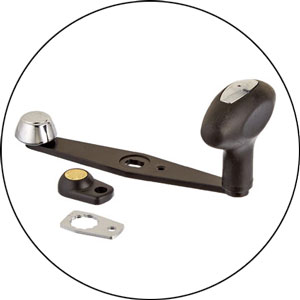
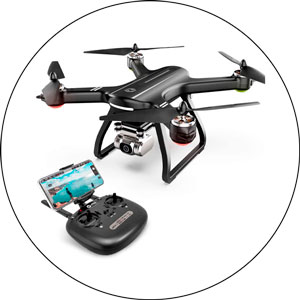
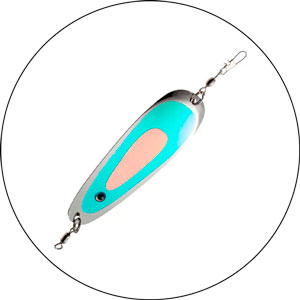
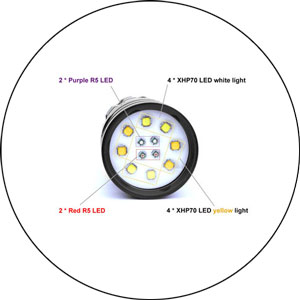

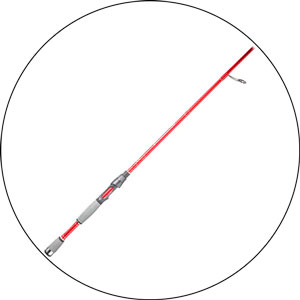
Thank you for sharing your knowledge and expertise on the subject! I have always found that fishing during the incoming tide tends to be the most successful. To maximize my chances, I make sure to plan my fishing trips around the tides and aim to start fishing just as the tide is starting to come in or just as it is starting to go out.
I find that fishing during these times when the tide has been moving for a while produces the best results. On the other hand, I have found that the least productive time for fishing is during dead low tide or slack tide. It is my personal opinion that these are the worst times to fish. I hope that this information is helpful to those who are looking to improve their fishing success.
Overall, this is a well written and informative guide for both beginner and experienced anglers looking to improve their tide fishing game. Fishing success is dependent on several factors, including the type of fish you are targeting, the barometer readings, and the water temperature.
From my personal experience, I have found that fishing in the inlet at the end of the incoming tide and the beginning of the outgoing tide, during a period of decreasing barometer readings in the fall, and with the presence of bait fish in the water, can be an ideal time to catch larger game fish. However, when pursuing sheepshead, I prefer to fish during the slack tides.
It is useful to keep a journal of your fishing activities, which should include the species you are targeting, the bait and tackle you are using, and the various conditions of the day, including any prior weather conditions that may have impacted the current water conditions. This will help you to keep track of what has worked well in the past and what conditions you need to be aware of in the future.
I especially appreciated the explanation of how different types of tides can affect fishing spots differently. The ideal time to go fishing depends on the specific location you are fishing in, as it takes time and experience to determine the best stage of the tide and the best time of the year for a particular place. However, the general belief is that the two hours before high tide and the two hours after high tide are typically the most productive.
Saltwater fishing can vary greatly depending on the type of fishing being done, such as boat fishing, open beach fishing, pier fishing, or inshore river/bay fishing. Each of these types of fishing will be impacted by the tide in its own unique way, and the presence of structure and current can play a significant role in determining where fish will be present.
In general, the outgoing tide tends to have the strongest current, and many saltwater fish orient themselves to take advantage of this current to ambush prey. Based on my personal experiences fishing in inshore bays, I have found that the outgoing tides tend to produce better results.
Additionally, I have found that fish tend to be active and feed during the last hour of the outgoing tide and just a little bit into the dead low stage, particularly when fishing at the mouths of creeks flowing into saltwater rivers. On the other hand, incoming tides bring in cooler and cleaner water, which attracts the fish’s food sources, making them more likely to be present.
The tips on paying attention to the tide schedule and using the right gear for the current conditions are especially useful. According to my readings and observations, the last hour or two of the incoming tide and the first hour or two of the outgoing tide are generally considered to be the best times for fishing.
Some anglers have a preference for either outgoing or incoming tide, but I have not personally noticed a significant difference. The important factor is that the tide is moving, rather than its direction.
It is important to note that different fishing spots may perform better or worse depending on the stage of the tide. For example, at one of my favorite backwater spots, I have consistently noticed that fishing is more productive closer to low tide rather than high tide.
I am not sure why this is the case, but I have noticed that the fish seem to move elsewhere during high tide. This has happened so frequently that I no longer bother fishing at that spot during high tide.
Great article on tide fishing techniques! It’s helpful to understand how tides can impact fishing success. The ocean experiences two main tidal phases, high tide, and low tide, during which there is limited or no water movement. In between these two phases, we have the incoming and outgoing tides.
During incoming tide, water rushes into the shore, building up to the high tide. On the other hand, during the outgoing tide, water drains away from the shore until it reaches low tide.
Tide charts are used to track the time and height of high and low tides. The greater the difference in height between high and low tides, the quicker the water will move during the incoming or outgoing tides.
In general, fishing is considered to be most productive when there is movement in the water, either during the incoming or outgoing tides. Of course, there are exceptions to this rule, but moving water is usually better than still water in most fishing scenarios.
I apologize if this question has already been asked before. As a beginner in surf fishing, I am not completely certain about the ideal time to go fishing. There are several opinions floating around, with some people recommending fishing during the early morning or at dusk, as these are the times when fish are more likely to feed due to the cooler water temperature.
On the other hand, many anglers suggest fishing an hour or two before or after high tide. This is a popular belief among many experienced fishers. However, what if high tide happens to be at 2 PM, which is usually the hottest time of the day? Under such conditions, when would be the best time to go fishing? I would greatly appreciate your thoughts on this matter.
The best time to fish varies depending on a number of factors, such as the species you’re targeting, water temperature, and weather conditions. In general, many anglers find that fishing during the incoming or outgoing tide, when the water is moving, is more productive than fishing during a slack tide when there is little water movement.
Additionally, some anglers prefer to fish during the early morning or late evening, when water temperatures are cooler and fish may be more active. The ideal fishing time can also be affected by the tides, so checking tide charts and considering the time of high or low tide may also be helpful in determining the best time to fish.
When it comes to determining the best time to fish based on tide, it ultimately depends on the location you are fishing in. However, it is commonly observed that the hours near slack tide, which occurs in the middle of the roughly six-hour window between high tide and low tide, tend to be the most productive.
As for the time of day, there is no strict rule, as fish can be caught at any time. However, some anglers believe that fishing at dusk and dawn may increase your chances of success, as this is when some species of fish are more active. In addition, for surf fishing on public beaches, early morning or around sunset can be a preferred option to avoid the crowds of beach-goers. Ultimately, the best time to fish is when you have the opportunity to do so.
I am fortunate enough to say that I have not experienced any unpleasant encounters with joggers while fishing. However, I have had some incidents with individuals in the water. When I am fishing,
I prefer to stay away from areas designated for swimming, but even then, people still seem to find a way to interfere with my fishing lines. This includes swimmers bumping into my line and getting frightened or parents becoming hostile because their children are swimming towards my line and attempting to find my bait in the water.
Considering the presence of people is a major factor in determining the best time for me to go fishing. I always make an effort to set up my fishing equipment well away from areas supervised by lifeguards to ensure that my lines are not disturbed. Nevertheless, people still seem to find ways to cause problems.
The time of day is the most significant factor for me in terms of fishing. Although the tide levels do play a role in determining where and how I will be fishing, the timing of my fishing trip is the more important aspect to consider. If the water is too far out to be fishable during the time I want to go, then I will have to take that into consideration, but for the most part, time is the bigger factor.
As a beginner in fishing, it’s important to keep in mind that the best time to go fishing is typically two hours before and after high tide. Arriving at the beach during low tide can also be beneficial, as it allows you to survey the area and understand the structure of the beach, such as identifying bars, troughs, holes, cuts, etc.
Incoming tides can disturb the sand and release food sources like worms, crabs, and other invertebrates, leading to an increased likelihood of biting.
It’s worth noting that there are no set rules in fishing, and the best way to improve is to learn how to read the water and gain experience. To get started, consider finding resources online, such as watching videos on YouTube channels that may provide helpful tips and insights.
As a general rule, it is recommended to start fishing two hours before high tide and continue for an hour after high tide. However, there are several additional factors that can impact fishing success. To gain insight into what works best for you, it may be helpful to log various conditions each time you go fishing, such as the height of the tide, the time of day, barometric pressure, weather conditions such as wind and rain, the cycle of the moon, and other minor details.
Based on personal experience, some of the best days for fishing may occur when high tide hits around 10 AM and the full moon has either passed or is about to occur. This allows for early fishing starting at 8 AM and the potential for a successful bite as the bigger fish may be more likely to be active.
It’s also important to note that fish can be active during both rising and falling tides, particularly during times of changing tides. Optimal conditions include rising tides along with favorable weather, where the swell or waves are not too intense but still create enough movement to stir up potential food sources.
For further information and tips, consider visiting Bill Varney’s website. He is a legendary shore fisherman in Southern California and has written a valuable book on the subject. His weekly fish report also includes information for your specific area.
In my personal opinion, there tends to be more activity during the early morning hours and towards dusk. Checking the barometric pressure is also a key factor to consider when fishing. I believe it’s best to go fishing every day, even if it’s just for a short period of time, such as 30 minutes.
Observing the sunset can also be a peaceful and enjoyable experience. I recall one memorable experience where I caught my largest fish after dropping off my son at school one morning. I went straight to a nearby pond and on my first cast, I caught an 8-pound bass at 8 AM.